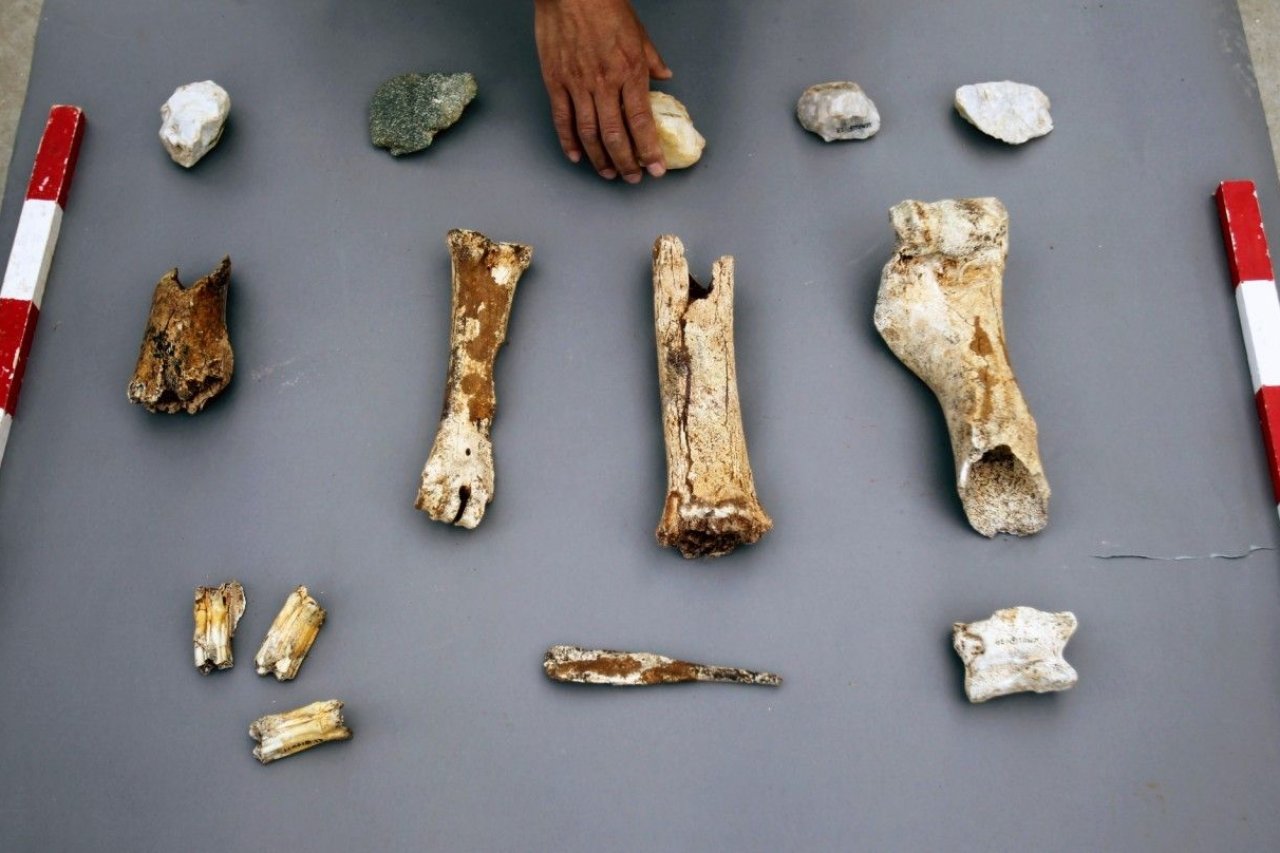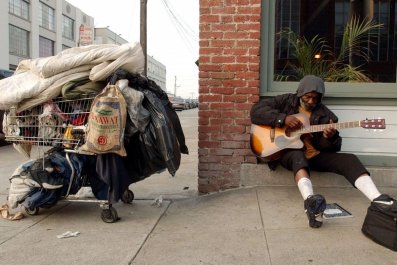Did Barney Rubble recycle his waste? Did Fred Flintstone go to the bottle bank? Archaeologists have discovered that recycling, our guilty green response to wasteful late 20th century consumerism, was first practiced more than a million years ago by cavemen.
Research suggests our earliest cave-dwelling ancestors from the Paleolithic Era practiced good stewardship, too. Just as we recycle paper and plastic today to make new products, our ancestors reused pieces of flint and bone to make new tools.
Last week, about 50 scholars from 10 countries attended The Origins of Recycling conference in Tel Aviv to share discoveries of how prehistoric people repurposed objects from their daily lives. They pointed to cave sites in Spain, Italy, North Africa and Israel where evidence of primitive recycling can be found.
"For the first time we are revealing the extent of this phenomenon, both in terms of the amount of recycling that went on and the different methods used," said Ran Barkai, a Tel Aviv University archaeologist and one of the conference's organizers.
Near where Rome now stands, Neanderthals - a close relative of today's humans who inhabited Europe 600,000 to 350,000 years ago - shattered elephant bones to extract marrow to eat and shaped the bone fragments into tools. Long after the tools were thrown away they were picked up and reworked, said Geologist Giovanni Boschian from the University of Pisa.
Barkai discovered a "Paleolithic tool kit" at Qesem Cave, an archaeological site near Tel Aviv inhabited by early hominids some 200,000 to 420,000 years ago. Flint chips that were reshaped into tiny blades for cutting meat — a Paleolithic form of "cutlery," according to a report in the archaeological learned journal Antiquity.
"These findings ... draw attention to a little-explored aspect of lithic studies, namely the recycling of old flakes as cores in the production of specific, sharp, tiny flakes for delicate and precise meat-cutting activities," Barkai said. "They used discarded or tossed tools to produce new tools that had nothing to do with the original tool. We saw this behavior in every part of the Qesem Cave."
To determine whether a tool or object was recycled, archaeologists look for evidence of retouching and reuse. They note the tool's patina — discoloration that occurs as the stone is exposed to air and water. Variances in patina indicate the object went through multiple incarnations.
So did cavemen recycle as a matter of course? Daniel Amick, a professor of anthropology at Chicago's Loyola University, warned researchers to be careful of drawing too close parallels between prehistoric behavior and the modern movement to recycle. "I think that when they recycled they did so on an 'ad hoc' basis, when the need arose," he said.
Avi Gopher, a Tel Aviv University archaeologist who worked with Barkai at Qesem, argued that while the plight of the planet may not have driven early humans to reuse tools, their motivations were similar to ours in other ways.
"Why do we recycle plastic? To conserve energy and raw materials," Gopher told the Associated Press. "In the same way, if you recycled flint you didn't have to go all the way to the quarry to get more. So you conserved your energy and saved on the material." "It was not an occasional behavior," he said. "It was part of the way they did things, part of their way of life."

























